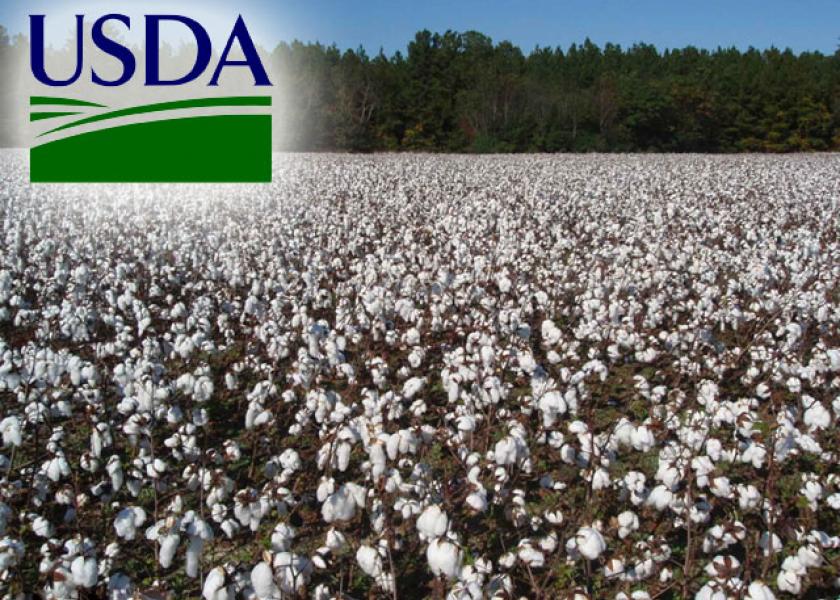WASDE: Cotton Sees Bigger Crop, More Exports

COTTON: The 2015/16 U.S. cotton supply and demand forecasts include higher production, exports, and ending stocks compared with last month. Production is raised to 13.4 million bales, as an increase of 458,000 bales for Texas is partially offset by revisions for other states. Domestic mill use is unchanged. Exports are raised to 10.2 million bales based on the larger available supply. Ending stocks are now projected at 3.2 million bales, or 23 percent of disappearance. The marketing year average price received by producers is projected to range from 56.0 to 68.0 cents per pound, a reduction of 3 cents at the midpoint from last month based on larger U.S. supplies and lower world consumption.
Estimated U.S. 2014/15 ending stocks are unchanged from last month at 3.7 million bales, reflecting stocks data from the Farm Services Agency and the Cotton System Consumption and Stocks report of the National Agricultural Statistics Service. See http://www.ers.usda.gov/publications/cws-cotton-and-wool-outlook/cws-15i.aspx after noon on Tuesday, September 15 for a detailed explanation of the stocks calculation.
With lower 2015/16 global cotton consumption, and virtually unchanged global supplies, world ending stocks are projected higher than last month. Production is reduced for Brazil and Pakistan, partially offset by the increase for the United States. Forecast world consumption is reduced for several countries, including Brazil, India, Indonesia, Pakistan, Thailand, and Turkey, as economic uncertainties and rising yarn stocks point to lower-than-expected demand. World trade is reduced slightly as a result of the lower consumption. World ending stocks are projected at 106.3 million bales.







